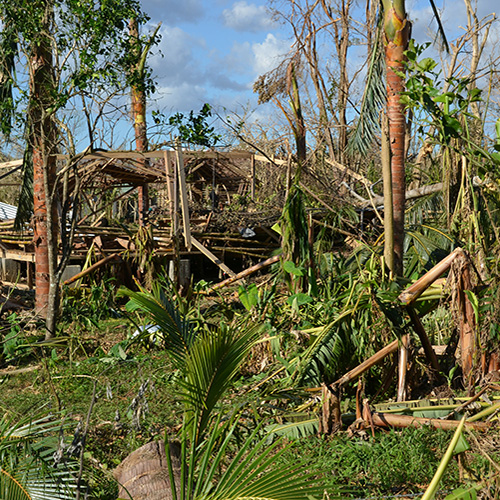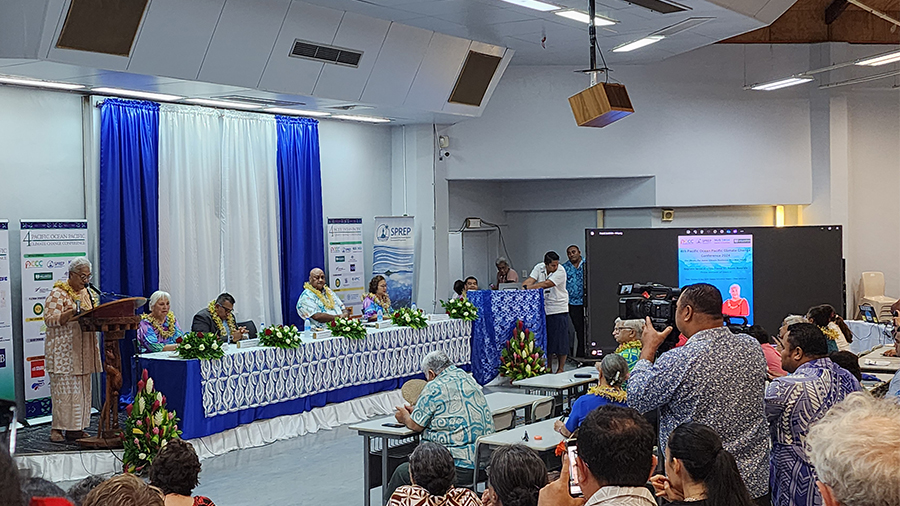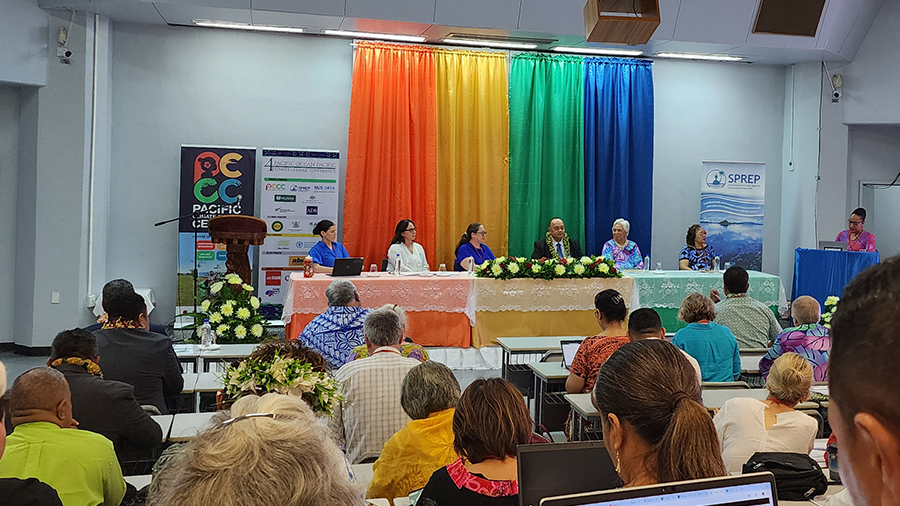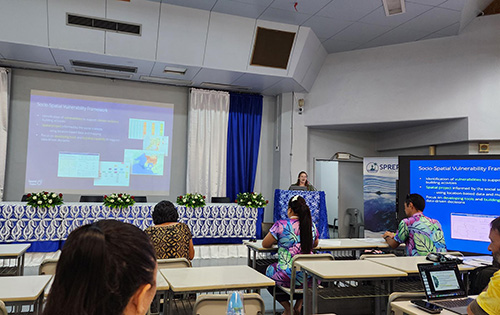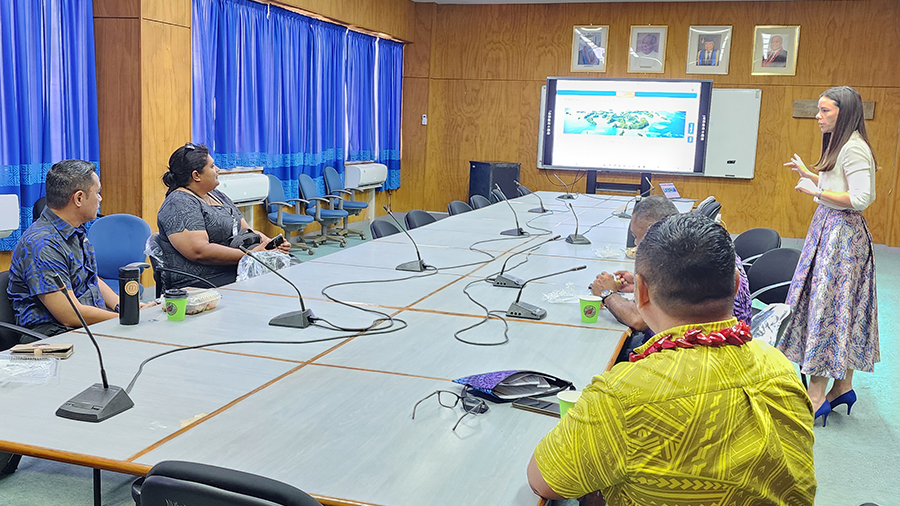Pacific Islands region facing harsh consequences of climate change despite being responsible for only 0.03% of global greenhouse gas emissions
In May, Spatial Vision attended the 4th Pacific Ocean Climate Change Conference in Samoa, hosted by the University of Samoa. The conference was attended by approximately 300 leaders, climate professionals, scientists, lawyers, academics and politicians from around the world to discuss the climate adaptation measures that are necessary, as the region will be one of the first to experience the brunt of climate change impact.
Pacific leaders have already declared that Pacific communities are facing a climate emergency threatening livelihoods, security and the wellbeing of people and ecosystems. Speaking at the conference, Samoa’s Prime Minister, Hon. Fiame Dr. Naomi Mata’afa described climate change as the biggest threat faced by the region, as she gave her keynote address.
“Many of them already experience higher temperatures, shifts in rainfall patterns, rising sea levels and altered frequency and intensity of extreme climate events. Strong traditions, cultures, and adaptability to the unique characteristics of their environment and geography have fostered resilient communities over centuries. However, climate change poses a considerable threat to their future.
“As small island developing states and being the most vulnerable countries to the effects of sea level rise, ocean acidification, coral bleaching, overfishing and marine pollution, our voices and interests should be the basis for global action.”
Pictured right: Prime Minister Hon. Fiame Dr. Naomi Mata’afa and attendees of the POPCCC.
Voices for change
Bringing together experts from government, not-for-profits and the private sector, the conference covered how the region can improve resilience to climate impact. Sea levels are rising, temperatures are increasing, and weather events are becoming more extreme. The Pacific Islands region is vulnerable to changes in the environment, causing disruption across industry and communities and climate change poses considerable threat to the future of the region.
In her presentation to attendees Rhiannan Mundana, Spatial Vision’s Climate Specialist, presented a socio-spatial community vulnerability framework that she and the team recently developed as part of an initiative to build climate resilience.
“Despite contributing less than 0.03% of global greenhouse gasses, the Pacific Islands region and its communities are disproportionately affected by climate change impacts and associated disasters. Although an extreme weather event can be felt by many, it is often those most vulnerable within a community who will feel the greatest impact and suffer lasting the consequences. Geospatial intelligence can play a significant and unparalleled role in the building of community resilience by identifying, mapping and communicating climate vulnerability in those populations that are most at risk in light of climate change”, says Rhiannan.
By harnessing the latest climate data in concert with well-established climate risk frameworks outlined in the Intergovernmental Panel on Climate Change (IPCC) Assessment Reports, Spatial Vision has developed a comprehensive spatial framework to identify the most vulnerable members of the community to climate change. The framework details how climate hazards and exposure over time, coupled with the capacities and inherent sensitivities of vulnerable populations, can be used to assess the likely vulnerability to these changes, and consequently, the associated risks and impacts.
Spatial Vision’s spatial framework blends the fundamentals of spatial analysis with key insights from the social sciences. This allows for case studies on how the model can be applied to populations and communities across the Pacific Islands region, effectively mapping vulnerability in populations most affected by climate changes. This framework is an invaluable resource for community development practitioners, local councils, emergency services and communities themselves, and has been developed to allow replicability and application across different regions and groups. It provides tools to identify and implement practical interventions aimed at bolstering resilience in the face of our changing climate and resultant extreme events.
Pacific Islands countries and territories are working together to improve climate resilience, as evident through the “2050 Strategy for the Blue Pacific Continent’ which is a long-term approach to working together as a region. It is an opportunity to secure long-term wellbeing and prosperity through being ready for future climate and geopolitical events.
Pictured right: Rhiannan Mundana presenting to POCCC delegates. Kimberley Worthy workshopping the online MMEL tool with stakeholders.

